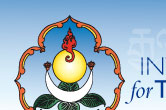  |
 |
|
|
TTM Journal In English language. Subscribe to the Journal of Traditional Tibetan Medicine Individual Copies of the Journal of Traditional Tibetan Medicine can be obtained from local TTM Branches.
|
||||||||||||||||||||
|
Yuthok Nyingthig Ngondro PracticeBook This 28-page pocket-sized booklet contains the Tibetan text for the Yuthok Nyingthig Ngondro practice. This very compact text is specifically designed for practitioners who have completed the Yuthok Nyingthig Ngondro, who have a knowledge of the Tibetan language, and who wish to use this as a text for daily practice. (Dimensions: 10cmx14cm; 28pp, incl. 8 full-colour plates; Tibetan language; printed, published and distributed by IATTM, 2006)
|
||||||||||||||||||||
|
The Mantra Healing Collection This unique volume comprises a compilation of some of the most important and influential historical texts on Tibetan Mantra Healing, many of which have never been in print before. Among the included texts are:
These manuscripts have been collated by Dr Nida Chenagtsang and Ngakmang Institute, as one of the many ongoing projects of preservation of historic texts of the Tibetan Ngakpa culture. Some of these texts are known in the Vajrayana tradition; most of them are drawn from the Ngakpa tradition. This volume has been compiled with the assistance - and the blessing - of important masters of the Ngakpa lineage, who have made available their knowledge and allowed access to these rare texts which remain in their custody. The text is in Tibetan, with an introduction by Dr Nida Chenagtsang. A wide variety of spoken mantras, written mantras and amulets are depicted; black-and-white line drawings complement the text. (Dimensions: 8.5cmx16cm; 320pp; Tibetan language; Published by Ngak Mang Institute in conjunction with Beijing National Publishing House, 2004, ISBN 7-105-07797-2)
|
||||||||||||||||||||
 |
The Ku Nye Handbook In this book, Dr Nida Chenagtsang presents his original research into the practice and theory of the traditional form of Tibetan Massage known as Ku Nye (Tib. bsKu mNye), as well as lesser-known external therapies such as Moxibustion, Hor Me (‘Mongolian Moxibustion’), Yuk Cho (Stick therapy), Cupping, use of Compresses, and laying of stones, to mention but a few. The book is presented as a practical manual, in the Tibetan language, with many diagrams and black-and-white photographs. The book is now used as a text in medical colleges in parts of Tibet, China and Nepal, and forms the basis for the course manuals used by the IATTM. This text is currently being translated, and it is anticipated to be available in English and Italian languages in the near future. (Dimensions: 139mmx220mm; 276pp; black-and-white line drawings and photographs; printed and published by Hong Kong Flying Horse Publishing Company 2001, ISBN 962-450-412-1
|
||||||||||||||||||||
|
Selected Articles on Tibetan Medicine This text, in the Tibetan language, presents a number of articles on various aspects of Tibetan Medicine. Amongst the included topics are:
This fascinating collection of articles portrays Tibetan Medicine within its historical context, giving valuable insights into Tibetan Medicine as part of a living cultural tradition. (Dimensions: 139mmx220mm; 239pp; printed and published by Gansu National Publishing House 1999, ISBN 7-5421-0694-5)
|
||||||||||||||||||||
|
Yuthok Nyingthig Root
Text and Commentary This book presents theYuthok Nyingthig Root Text and Commentary in modern print for the very first time. This modern edition is a printing of the entire literary content of the traditional woodblock-printed pecha produced by the Chagpori Medical School in the19th century. Historical Background The Yuthok Nyingthig Root Text was first written in the 12th century by Sumtong Yeshe Zung, who hand-copied and compiled notes from Yuthok’s original writings and teachings. There have been a small number of subsequent revisions of the text by important physician-scholars, who have also added their commentaries. First was the 15th century text expansion and commentary of ZurKar Nyamnyi Dorje (founder of the Zur Medical School), who also revised the Four Tantras. This was followed by a revision and commentary in the 17th century by sDe Srid Sangye Gyamtso - regent to the 5th Dalai Lama and founder of the famous Chagpori Medical School. From that time, the Yuthog Nyingthig practice and teachings became an integral part of the Chagpori curriculum; since then, students and graduates of the Chagpori Medical School have traditionally been practitioners and lineage-holders of this tandem lineage of Medicine and Spiritual practice. Another commentary was added by Jamgong Kongtrul Yontan Gyamtso in the early 19th century. The final revision of the Yuthok Nyingthig Root Text was made in the 19th century by Karma Jigme Chokyi Singye, who was the very last teacher at the Chagpori Medical School. This version of the text – in the form of a woodblock print - has been in use to the current time. Content The Yuthog Nyingthig Root text presents:
There are explanations given for of all of these practices, as well as information on how to integrate all of this with the practice of medicine. (Dimensions: 8.5cmx16cm; 505pp; Tibetan language; Published by Ngak Mang Institute in conjunction with Beijing National Publishing House, 2005, ISBN 7-105-08634-5)
|
||||||||||||||||||||
© IATTM 2007 |
back to top |




